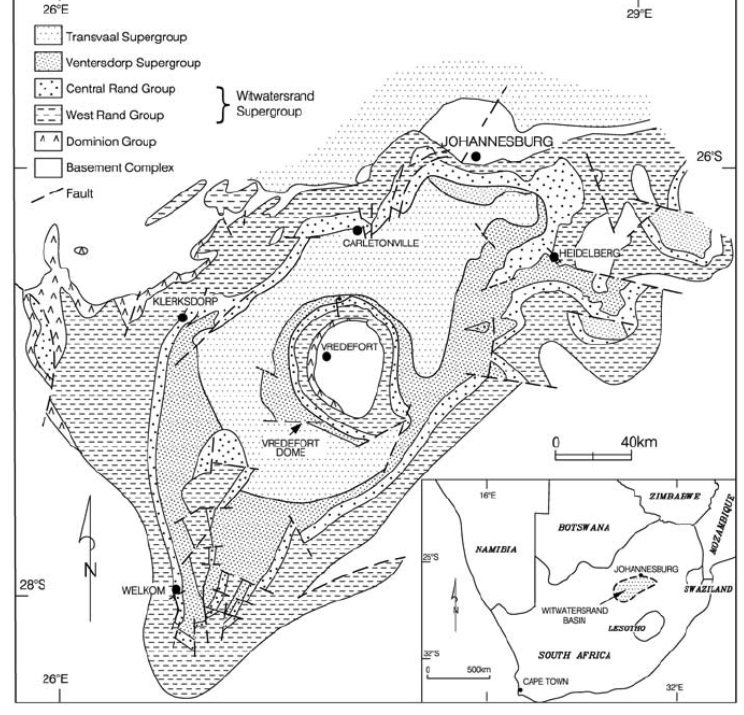A Brief Science Diversion
Hands up if you’ve heard of pseudotachylite? No? Neither had I until 1984 when – as a fresh faced geology graduate- I landed my first job underground in the South African gold mines. To be honest, I’d never heard of tachylite let alone pseudotachylite. One’s real and the other a poor copy? I didn’t have a clue. Then at 21 I started a 3-year contract working down a deep hole in the Witwatersrand Basin where pseudotachylite – which I’ll call PT because I can’t be arsed to write it out every time- became part of my every day geological life.
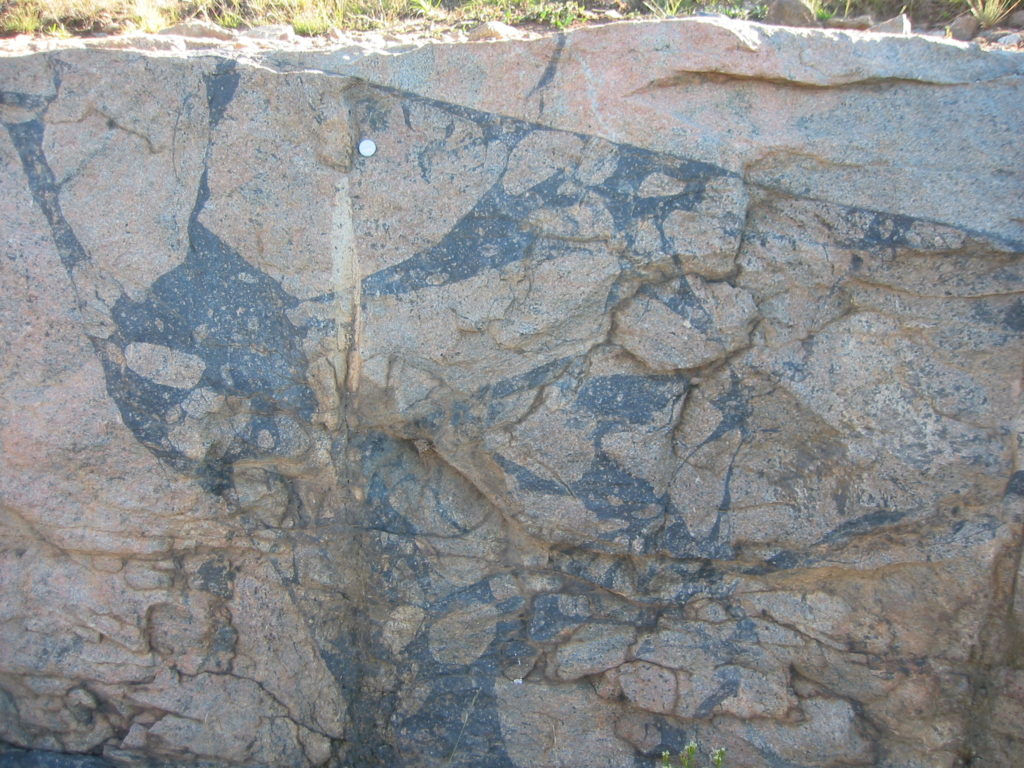
The Wits mines exploit ancient gold-bearing gravelly rocks accumulated in a huge sedimentary basin; a 2.7 billion-year-old accumulation of what were once sandstones and conglomerates but are now metamorphic quartzites. The basin was big, possibly 300km or more along its long axis and the experts tell us it looked a little bit like the photo below. Huge fan deltas formed where 5 or 6 rivers flowed into a large depression or basin.
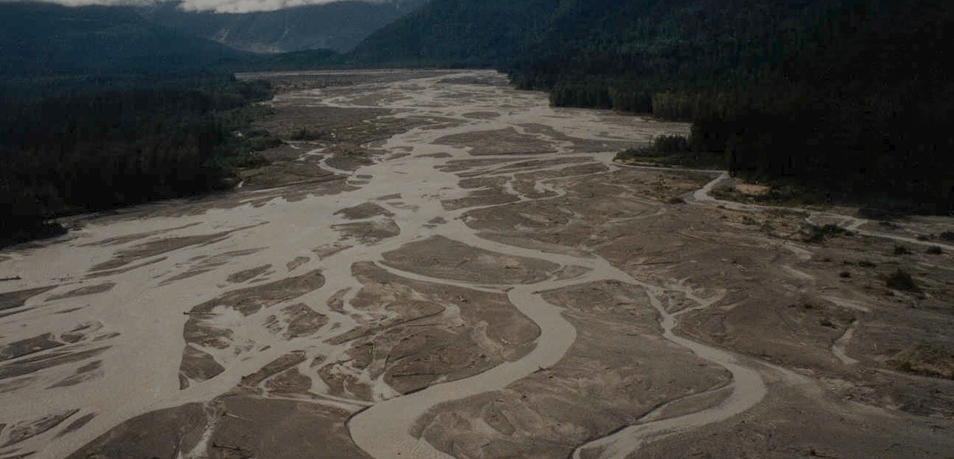
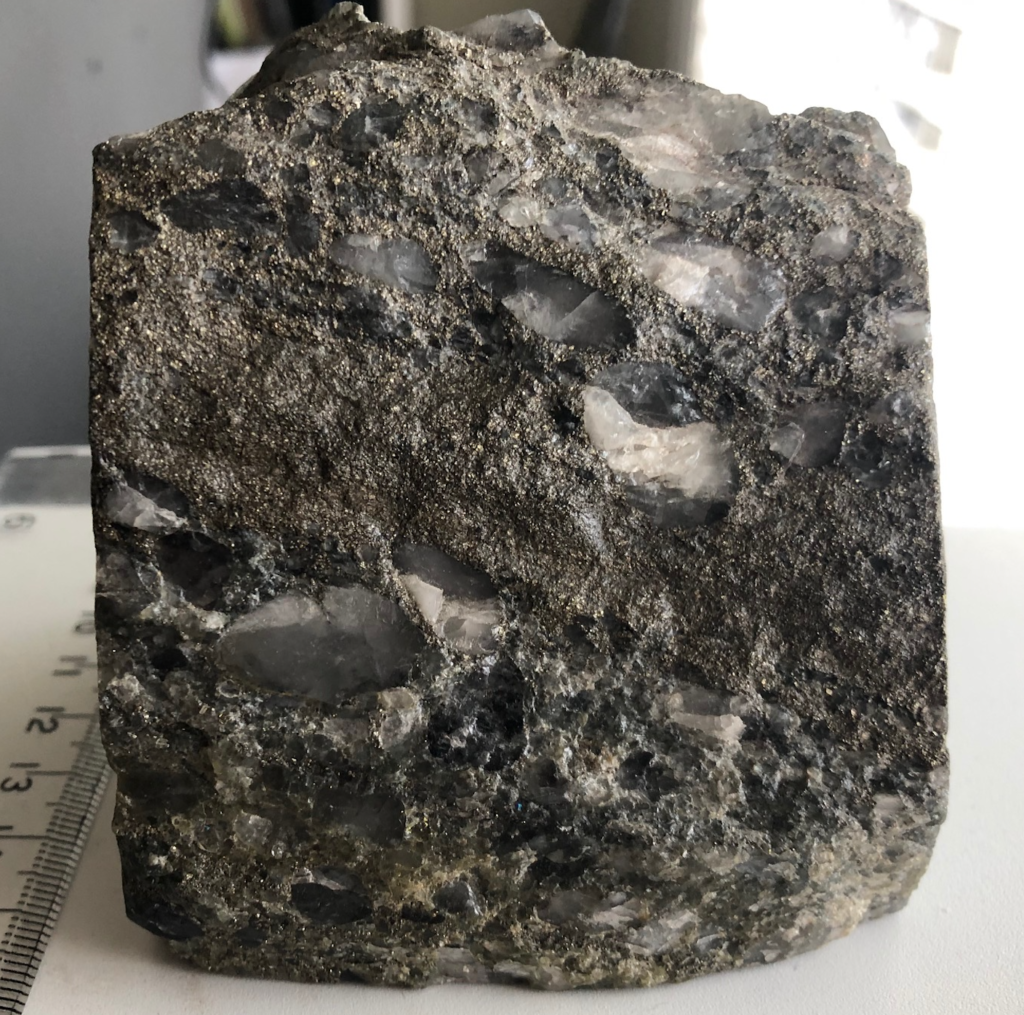
Way Down Deep
Deep underground in the gold mine tunnels, well down in the sequence of Wits quartzites, nearly every structural fault we mapped had PT “injected” along it. The PT was easy to recognise; typically grey-green to green in colour, almost glassy in appearance, with clasts or eyes of quartz and obvious flow banding. And I’d never seen anything like it. So what is PT? Here’s one version of the official definition:
Pseudotachylyte or Pseudotachylite is a cohesive glassy or very fine-grained rock that occurs as veins and often contains inclusions of wall-rock fragments…. It was named after its appearance resembling the basaltic glass, tachylyte. Typically, the glass is completely devitrified into very fine-grained material with radial and concentric clusters of crystals. The glass may also contain crystals with quench textures that formed via crystallization from the melt.[1][2] Chemical composition of pseudotachylyte generally reflects the local bulk chemistry. Pseudotachylyte may form via frictional melting of faults, in large-scale landslides, and by impact processes.
Yep, that’s what I was seeing.
For mine geologists in the Wits, mapping the endless network of adits and stopes, the accepted wisdom was that the thicker the PT along the faults, the bigger the movement must be along those faults. Stood to reason right? Big = lots of slip.
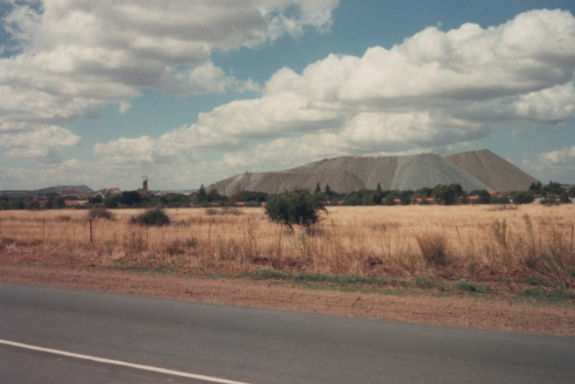
I Don’t Believe It
But my own mapping showed that this was not always the case. I once mapped a fault in a cross cut 7,000ft down that contained close to 20m thickness of PT. Holy shit, I thought, that’s a big mother of a fault. So I paid a visit to the next mining level 200 feet above to look for the same structure. Sure enough, the fault was there but it only had 2-3cm of PT on it, and when I plotted my mapping up back in the office, I could see that the displacement along the fault was maybe 10m at most.
This told me 2 things: 1) thickness of the PT did not correlate to displacement; and 2) it was obviously injected into places where there were cavities or kinks along the faults. In other words, when it formed it was fluid enough to fill up cavities, much like magma would.
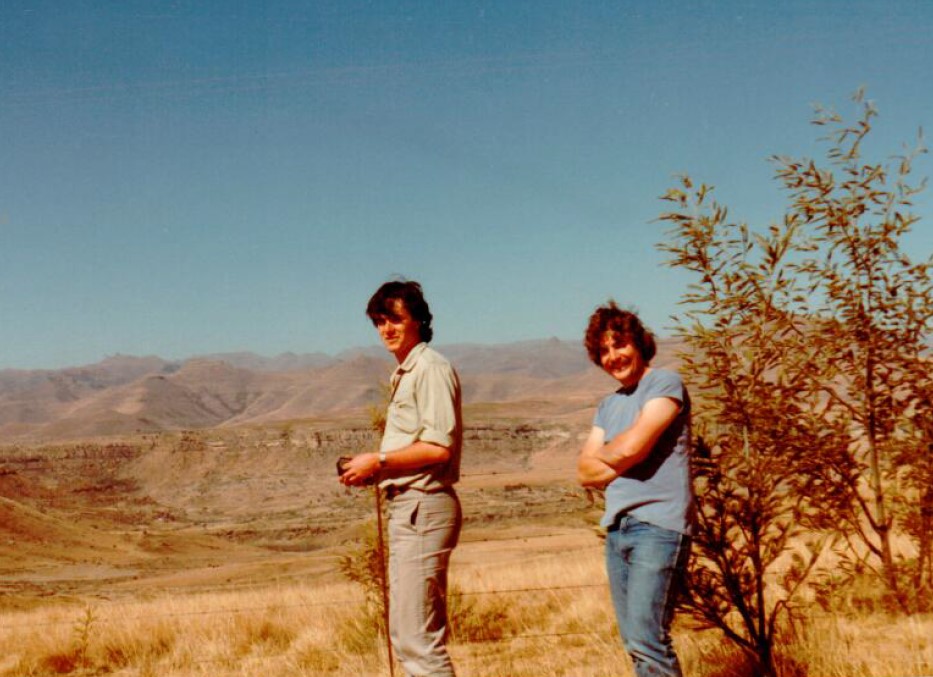
There was little or no speculation amongst industry geologists as to what formed the PT. It was just there. A wise head told me it might reflect seismic movement along dry faults. It takes a lot of friction to melt quartzite and turn it into PT, which implied rapid fault movement due to some sort of shock perhaps. And its presence on nearly every significant fault suggested that either the event that had formed the PT had happened again and again throughout the structural evolution of the basin, or it had happened once, but it was a big basin-wide event, which was hard to fathom. Research was needed.
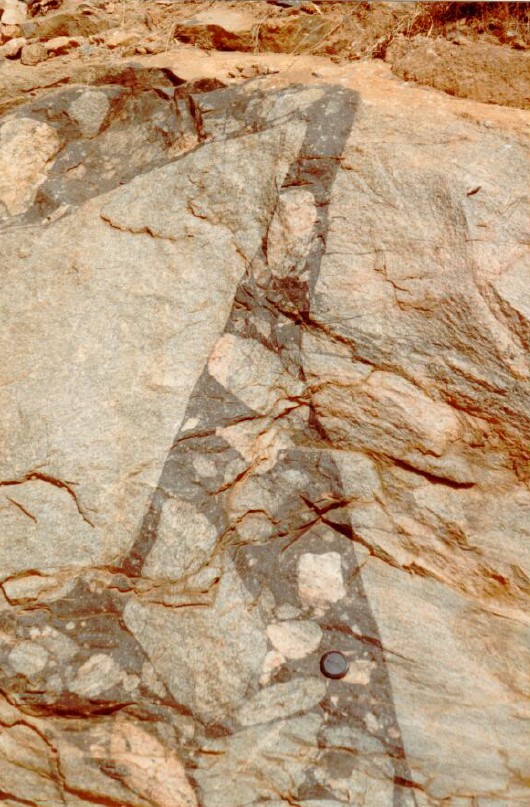
Photocopies.
In the dark, lost, miserable days before the internet google-izer I had to go through the mine library to order photocopies of papers (yes kids, science used to come in photocopied papers ordered from the library.) I’d thumb through the earth science glossaries to find any information on PT. It took weeks to get scientific papers sent from the university libraries in Jo’burg or Cape Town and you wouldn’t really know how useful they were until they arrived.

I read descriptive papers telling me what PT should look like. I read manuscripts with arcane formulae that purported to predict the throw on a fault from the thickness of the PT layer – which never worked when I threw in the data from my underground mapping. I read all sorts of papers about rapid seismic movement causing frictional heat and melting rock flour into PT on the fault planes. But the big burning question for me was what mechanism could cause such rapid seismic movement on so many faults over such a large area?
As always with science, the solution was elegantly simple and right under our noses, but it came along in the 1990s a decade after I’d moved on to other things, as the importance of catastrophism in geology was making a come back. Sadly, I was oblivious to the new work, slogging away as a field geologist in eastern Europe, focused on assays and drills.
How Big’s Yer Dome?
Up the road from the town of Klerksdorp where I lived, about 60-70km as the crow flies, is a geological feature called the Vredefort Dome. It’s a 40km diameter circular feature. The origins of the dome were hotly debated for many years, but it’s now accepted that it’s an impact structure, caused by a collision between the Earth and a 9-mile-wide asteroid about 2.02 billion years ago. Before it was mostly eroded off, the crater is thought to have been up to nearly 300km in diameter, making it one the of the oldest and possibly the largest of the couple of hundred known impact structures on our blue planet.
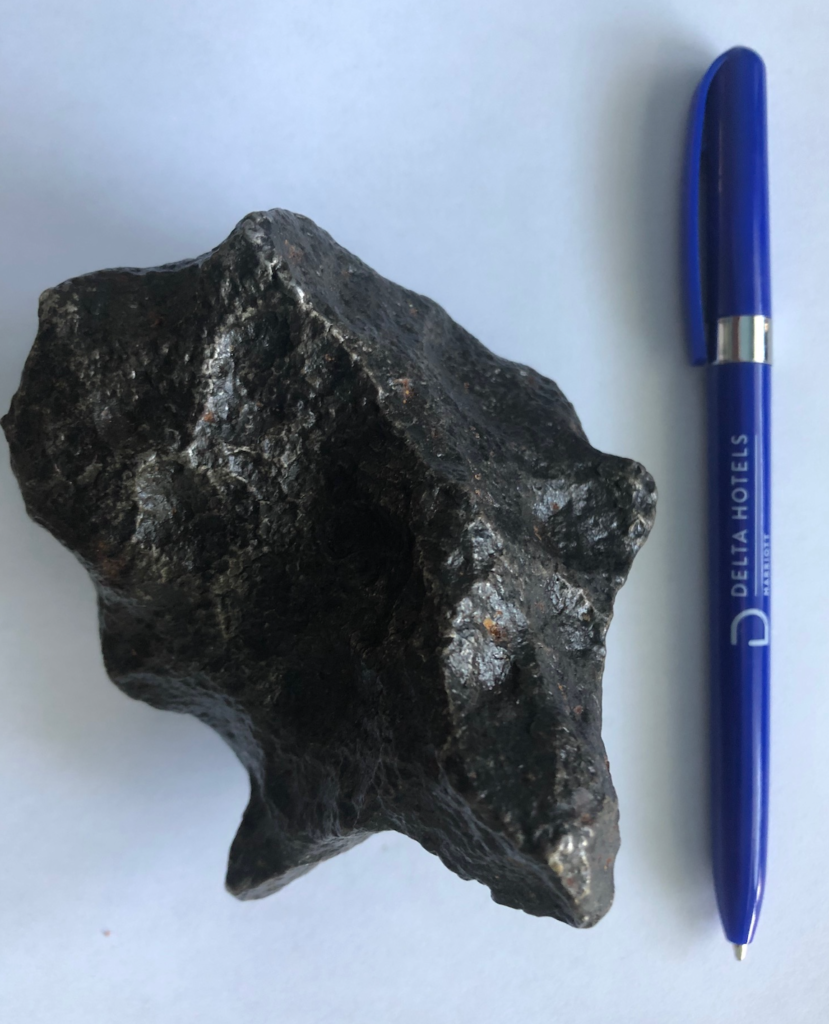
The Vredefort bolide slammed into the brittle quartzites of the Wits basin, crashing through the overlying Ventersdorp lavas which had erupted some 700-800 million years before it hit. Unsurprisingly, the Wits basin buckled as the massive crater formed and its thick sequence of quartzites and conglomerates now form a ring of ridges roughly around what might have been the crater margin. (One report I read suggests that if it hadn’t been for the impact, the Wits gold deposits would never have been exposed and subsequently discovered by our greedy species 2 billion years later.)
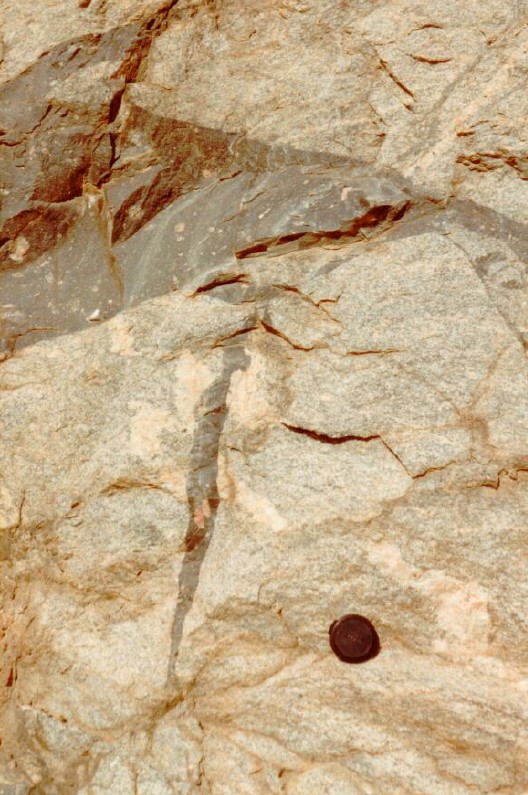
Eureka!
In the field you can find many of the telltale signs of an impact including cone-in-cone shatter structures and, crucially, large outcrops of PT composed of the local rocks melted by the impact. So, there was the answer, 35 years after my tenure on the mines I finally understood what I’d been looking at. This abstract states it very succinctly:
“Together with the disproportionately large volume of pseudotachylite in the rocks relative to that found in tectonic provinces, and the absence of evidence of genetically related large-scale shear or fault zones, this … evidence suggests an origin for the pseudotachylite related to the 2.02 Ga Vredefort bolide impact event that produced the dome. Possible origins for the pseudotachylite include shock brecciation and melting, post-shock decompression melting, and friction melting associated with the post-impact high-velocity excavation and modification phases of crater formation.”
https://doi.org/10.1016/S0040-1951(97)00072-3Get rights and content
The impact was clearly immense, a massive seismic shock moving through fairly dry rocks creating frictional melts which were immediately squeezed into any crack or low pressure zones i.e. the faults I mapped underground. The shock was intense enough to melt the local rocks wherever the movement occurred, hence the chemical composition of the PT reflects the composition of its host rocks. I’m guessing that there were multiple generations of shock caused by the impact, the uplift of the crater ring and core, and the subsequent gravity collapse of both.
In the Vredefort Dome, pseudotachylites are commonly observed except in the central part of its core. In the surrounding Witwatersrand Basin, they are reported from drill core sections and in underground workings. The matrix in PT from the Vredefort Dome is mostly a recrystallized melt phase, while those from the surrounding Wits Basin seem to be composed of clastic material. PTs both from the Vredefort Dome and the surrounding Wits Basin are geochemically closely related to their host rocks.
https://www.jstage.jst.go.jp/article/jgeography1889/110/1/110_1_1/_article
It was immensely satisfying to finally track down the answer to a geological puzzle that I’d mapped for 3 long years underground. It took 35 years to scratch this particular scientific itch but it was worth the wait.
And remember…
If my dullard’s approach to science hasn’t beaten the last vestiges of interest out of you, feel free to subscribe using the impact-related subscription box at the top of this page. I have more bolide-centric fun planned for future pieces.


